April 9, 2008
United Kingdom: Breakdown of Male-Female Relationships and the Devastation of Society
“Since marriage constitutes slavery for women, it is clear that the Women’s Movement must concentrate on attacking this institution. Freedom for women cannot be won without the abolition of marriage.”
— Sheila Cronan, Radical Feminism “Marriage,” Koedt, Levine, and Rapone, eds., HarperCollins, 1973, p. 219
Recent events have addressed the breakdown of male-female relationships and the resultant impact on society in the United Kingdom.
On April 4, Justice Coleridge, a Family Division judge in Wales and England, described family breakdown as “cancerous,” and stated, “almost all of society’s ills can be traced directly to the collapse of the family life.”
Coleridge also said, “We are experiencing a period of family meltdown whose effects will be as catastrophic as the meltdown of the ice caps.” He added that the threat to society is as great as that posed by “terrorism, street crime or drugs.”
The judge lay the blame for the calamity largely at the feet of the government, asking and then answering, “What is government doing to recognize and face up to the emerging situation? The answering is ‘very little and nothing like enough.’”
Needless to say, the government quickly defended itself with the declaration that “70% of families are headed by a married couple.”
Seventy percent. That means that nearly one in three families are not headed by a married couple. For insight into the significance of this fact, consider Justice Coleridge’s statement, “I’m not saying every broken family produces dysfunctional children but I am saying that almost every dysfunctional child is the product of a broken family.”
The salient point is that a 30% rate of broken families is enough to produce most social ills. And marriage is in free fall in the UK. According to recently released statistics from the Office for National Statistics, marriage rates in England and Wales have collapsed to their lowest level since nuptial record keeping began there in 1862, nearly 150 years ago.
In terms of raw numbers, this was the fewest marriages since 1895.
The dramatic decline since 1951 can be seen in the following graph.
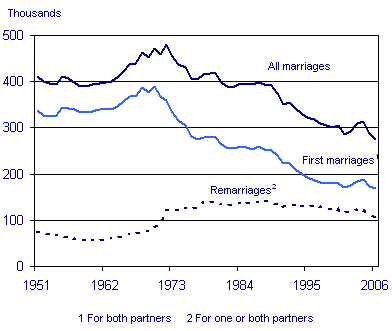
Note that this figure shows the number of marriages. The fall in marriage rates has been greater, because the population has grown over this period from about 50 million in 1951 to 60,587,300 in mid-2006.
An associated collapse in birth rates is reflected in the following population pyramid.
Current social systems require a pyramid with a relatively large base decreasing to a point at an age above 80. Instead of this, the United Kingdom’s population pyramid displays a dangerous roughly cylindrical structure with a falloff above the age of 60.
The UK’s aging population is the result of declines in both the mortality rate and total fertility rate. This has led to a declining proportion of the population under 16 years-old and an increasing proportion 65 and over. Very soon, a relatively small number of younger adults will have to support a large elderly cohort. This will make it more difficult to afford children, and the society could fall into a death spiral with even fewer youths to support the elderly while trying to afford children.
Marriage is disappearing in the United Kingdom. The country is rapidly aging. Social systems will soon be unsustainable at anything near their current level. And, in the words of Justice Coleridge, the government is “fiddling while Rome burns.”
Comments Off on United Kingdom: Breakdown of Male-Female Relationships and the Devastation of Society
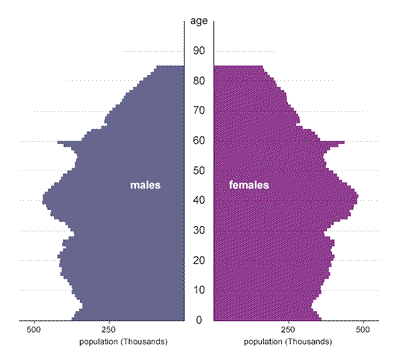
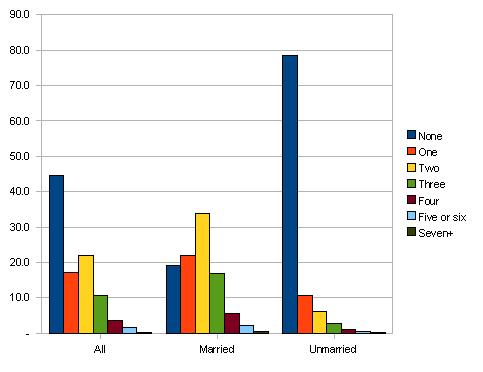
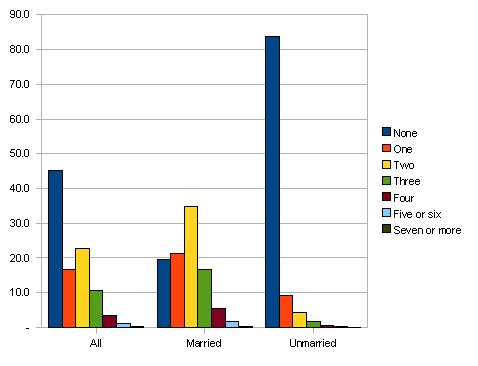
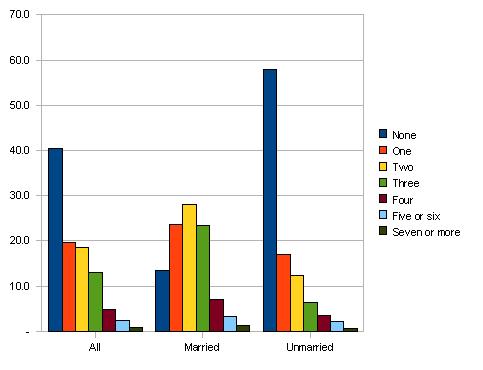
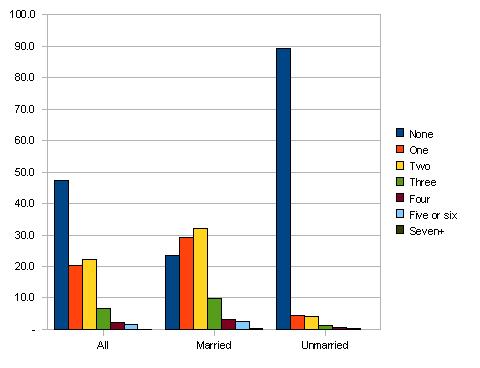
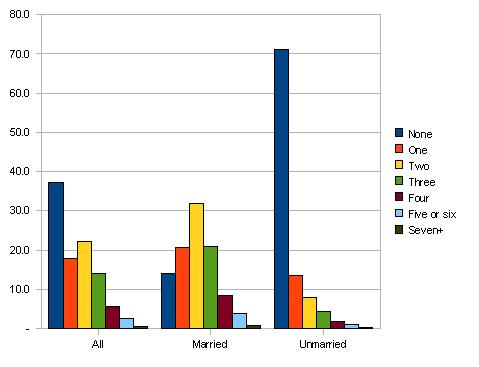
 Comments(1)
Comments(1)
